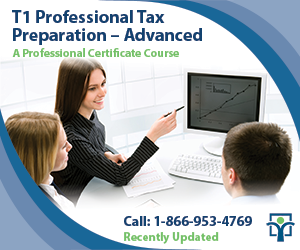Last updated: August 23 2016
Back to School: Teachers Get a New Tax Break

This month teachers return to the classroom to plot strategies and activities for the new school year, decorate the walls and devise new science experiments.
A little “tax school” will pay off, because in the 2016 tax year, for the first time they’ll be able to claim some of the out-of-pocket costs required to make those “aha” moments especially delightful. But teachers will need to follow some tax rules.
First, to make the claim, called the Teacher and Early Childhood Educator School Supply Tax Credit, it’s important to keep receipts for the expenditures. What’s at stake is a 15% refundable tax credit on amounts up to $1,000.
Eligible educators are those who hold a valid teacher’s certificate or early childhood education certificate or diploma, and use the supplies in an elementary or secondary school or regulated child-care facility. The teacher must be employed when the expenses for eligible school supplies occur and the supplies must be purchased by them and be used in the performance of the teacher’s duties of employment. They cannot be used as a deduction on any other person’s tax return.
In addition, the employer must certify in a statement that supplies were purchased for teaching or to enhance the learning environment, and that the costs were not reimbursable by the employer, parents or fundraising activities, or that they qualified for an allowance, unless any reimbursement of the expenses was already included in the teacher’s income and not deductible.
 |
Form T2200, Declaration of Conditions of Employment, will not be used unless the teacher’s contract of employment requires the teacher to provide and pay for the school supplies. In this case, the expenses qualify for the employment expense deduction, a more lucrative claim, as opposed to the non-refundable Teacher and Early Childhood Educator School Supply Tax Credit.
Eligible supplies fall into two categories: firstly, consumable goods, such as construction paper, flash cards, art supplies and stationery items like posters, charts and pens. They also include supplies for science experiments, such as seeds and potting soil, vinegar and baking soda.
The second eligible category is durable goods, and CRA is specific about the items that qualify, citing that only the following will count towards the credit: games, puzzles, books for the classroom, containers like banker boxes and educational support software. Specifically excluded from this list are items that can be used repeatedly or continuously like computers, tablets and rugs.
Some obvious questions will arise in contemplating this new non-refundable tax credit from the federal government. For example, can you bring the supplies from home and claim the value of them on the return? The answer is no, they must be specifically purchased for classroom use. What happens if you buy the school supply in 2016, but don’t use it until 2017? In that case, the claim must be made on the appropriate return, for the tax year in which the supply was purchased, 2016 in this case.
Evelyn Jacks is President of Knowledge Bureau and one of Canada’s most prolific financial authors of 52 books, including her most recent, Family Tax Essentials, How to Build a Wealth Purpose with a Tax Strategy.
©2016 Knowledge Bureau Inc. All Rights Reserved.





